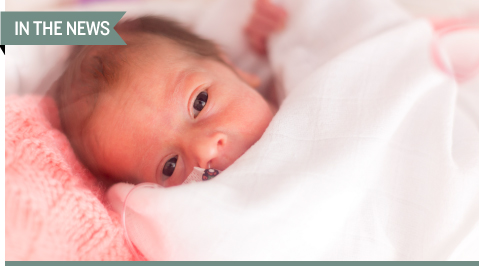
Image credit: Ondrooo / iStock / Thinkstock
Clinical studies and news reports are touting the potential for rapid whole genome sequencing (rWGS) to deliver quick and early diagnoses to critically ill newborns and to reduce healthcare costs. Two abstracts touched upon this topic at the annual conference of the European Society of Human Genetics in Milan. One of the studies, led by Shareef A. Nahas, PhD, FACMG, CGMB senior director for Rady Children’s Institute for Genomic Medicine in San Diego, demonstrated rWGS’ ability to improve care, prevent disability, and reduce acute care costs.
The study included inpatient children less than 1-year-old who had been nominated for genetic investigation at Rady. Investigators collected blood samples from both the children and their parents (if available) and conducted rWGS testing. Among 363 patients enrolled in the study after a year’s time, rWGS interpreted in 340 of them, yielding a diagnosis in 115 cases. Diagnosis generally took place within 96 hours, with the fastest results available in 37 hours.
Changes in management—typically different surgical interventions or palliative care guidance—took place in 77 families as result of rWGS-guided diagnoses. Compared with the projected cost of standard genetic testing, rWGS saved $1.3 million in net cost among the first 42 infants. “To date, our studies have shown a considerable clinical and economic benefit of sequencing children who were identified by clinicians as being suspected of having a genetic disorder. In the course of the study, one child was spared devastating neurological damage, and one had a significantly reduced risk of death,” Nahas said in a statement.
Another study led by Courtney French, PhD, a research associate/bioinformatician at the University of Cambridge in the United Kingdom, used WGS analysis to successfully detect the cause of disease in 15% of 145 severely ill infants and children whose condition had not been identified. Diagnoses included encephalopathies, myopathies, skeletal dysplasia, and rare syndromes, according to the abstract. The WGS rapid turnaround method could become a part of the U.K. National Health Service system’s clinical practice, French suggested.
“Because it is hard to tell from observation alone who will benefit from genomic diagnosis, we think that it should be carried out on all eligible children, rather than doctors deciding on individual cases based on previous clinical knowledge. By comparing the entire DNA sequence in children to that of their parents we can identify quickly the likely cause of disease,” French said in a statement.
Stephen Kingsmore, MB, ChB, DSc, FRCPath, president and CEO of Rady Children’s Institute for Genomic Medicine, believes that WGS should become a standard part of care in neonatal intensive care units in the United States. Rapidly diagnosing newborn babies with unidentified diseases can change outcomes and save lives, Kingsmore told The Washington Post. He has worked with Nahas and other researchers on clinical studies that demonstrate the benefits of rWGS, including one study of 65 infants randomized to receive either standard genetic tests or rWGS plus the standard tests. Considerably more babies in the rWGS group (32%) had a diagnosis of a genetic disease after 25 days of life versus those in the control group (0%).
Kingsmore during his time at Children’s Mercy Hospital (CMH) in Kansas City, Missouri, worked on a research project that leveraged WGS to provide a provisional genetic diagnosis within 50 hours. It involved a four-step process: preparing a sequencing library and entering clinical findings into symptom- and sign-assisted genome analysis; WGS; base calling and variant annotation, and variant analysis and interpretation. “The rapid WGS yielded approximately fortyfold aligned genomic coverage, with >99.5% concordance between variant genotypes and those detected via deep sequencing. The prospective WGS led to a definitive or likely molecular diagnosis in four of five babies,” Clinical Laboratory News reported in 2013.
In an interview with CLN, Kingsmore envisioned shortening this process to 24 hours. “I’m really looking forward to the day when we can decode a patient’s genome in a couple of hours at a cost that’s not prohibitive. That’s the magical thing. You visit the doctor, and later that day he or she can call you back with the results. That’s going to take a long time and a lot of thought as to how to communicate genome information, but that’s the line we’re on,” he said.
Earlier in 2018, Kingsmore and his colleagues were able to sequence a human genome in 19.5 hours, breaking a new record. However, the method may not yet be ready for clinical practice. “Kingsmore and his team had help from a few genomics companies, including Illumina; they’ll need to further refine the process before using it for future cases,” according to one news report.